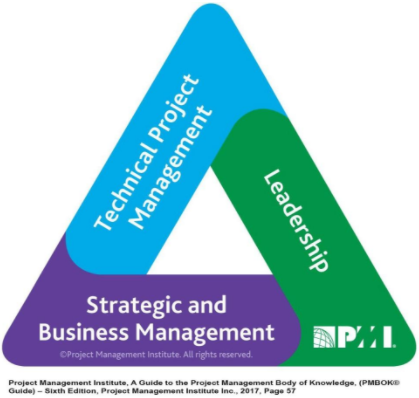
In the brisk, late-autumn air of November, I found myself summoned to a pivotal meeting, surrounded by roughly twenty managers and directors, all ensnared in a perplexing conundrum. A looming regulatory deadline, poised to descend upon us like an unforgiving tempest by year’s end, had forced our collective hand. Our resources, already stretched to their limits and solemnly dedicated to paramount enterprise endeavors, appeared to be insufficient for the Herculean task ahead. The orchestrators of this enterprise, the lead department, found themselves teetering on the precipice of despair, starved for the essential support of their counterparts. It was evident from the deliberation that the vital backing might not be forthcoming. In this crucible of circumstance, the stage was set for a demonstration of leadership for project management.
Unfortunately, such scenarios are all too familiar as the calendar year draws to a close. Each departmental leader guards their overburdened resources zealously, hoping to fulfill their solemn commitments. This, my friends, is the epitome of siloed thinking. But the question that emerges, like a beacon in the night, is whether these departmental overseers are mere managers or true leaders. The discourse on the distinction between management and leadership is extensive. Drawing from the Project Management Institute’s wisdom, project managers, in addition to their technical prowess, must also possess strategic acumen and the art of leadership.

Leadership versus Management
| Managers | Leaders | Sources |
| Administer | Innovate | PMI, HBS |
| Control and execute | Motivate and inspire | PMI, DPM |
| Seek to maintain the status quo | Seek challenges | PMI |
| Think short to mid term | Think long term | PMI |
| Worry about doing things right | Worry about doing the right things | PMI |
| Have limited influence | Have a wide circle of influence | PMI |
| Organize process | Align people around vision | HBS |
| Focus on systems and structures | Focus on People | HBS |
| Manager is a title with responsibilities | Leadership is a quality | HBS |
| Execute by repeating what works | Improve what works | DPM |
| Are meticulous | Are mentors | DPM |
| Strive for success | Challenge definition of success | DPM |
| Task-oriented | Delegates | DPM |
Most discourse on the subject seeks to answer the question, “Are you a manager or a leader?” However, let us chart a different course and ask, “When do you wear the mantle of a manager, and when do you step into the shoes of a leader?” Not everyone carries the official title of manager, but anyone, at a given moment, can rise to the occasion as a leader. Think of the passerby who stumbles upon an accident, taking charge, directing others to summon help, and rerouting traffic—this is leadership in action.
In the daily tapestry of our professional lives, supervisors often find themselves weaving a hybrid pattern, seamlessly blending both management and leadership behaviors. A project manager, for instance, is expected to meticulously execute, monitor, and maintain control over project tasks—a quintessential manifestation of managerial duties. Simultaneously, project managers must navigate the complex terrain of leading resources over whom they wield no direct authority. They must ignite motivation, kindle inspiration, orchestrate alignment around a common vision, refine processes, and wield influence that transcends the boundaries of departmental silos.
Project Management Leadership
This very scenario played out before me in that fateful meeting—an opportunity to perceive the grand tapestry and devise a solution that transcended the myopic confines of departmental interests. The departmental managers, trapped in the web of status quo preservation, were shackled by their limited sphere of control. Their aspirations were confined to fulfilling immediate obligations. Yet, the challenge that confronted us harbored far-reaching implications, not just for one department, but for the entire organization and its external stakeholders.
After much deliberation, a pathway forward emerged. Our plan was to conceptualize, develop, and publicize a solution by year’s end, with actual service delivery scheduled for the following year. This compromise garnered unanimous approval. In the days that followed, a director approached me, astounded by the atmosphere of the meeting and the collective stagnation that had enveloped it. It was the project manager who, she noted with admiration, embodied the traits of leadership—innovating a path forward, rallying stakeholders around a common vision, and ultimately delivering results.
The solution we forged resonated with the market’s desires. Webinars heralding our innovation sold out within hours of their announcement. Multiple sessions had to be conducted, and our achievement was hailed as a testament to the organization’s prowess. To be the project manager to whom key stakeholders turn when the path ahead appears shrouded in uncertainty—this is the zenith of professional influence. While positional power may elude you, the opportunity to showcase leadership that ripples across the entire organization remains within your grasp. Seize it with fervor!
Can you share instances where you’ve witnessed project managers embodying leadership qualities, or perhaps reflect upon your own experiences?
- PMI – https://www.pmi.org/learning/library/essential-leadership-skills-project-managers-6699
- DPS – https://thedigitalprojectmanager.com/leadership-vs-management/
- HBS – https://online.hbs.edu/blog/post/leadership-vs-management
- https://www.forbes.com/sites/lizryan/2016/03/27/management-vs-leadership-five-ways-they-are-different/#199eb25269ee
- https://www.projectmanager.com/training/leadership-vs-management
